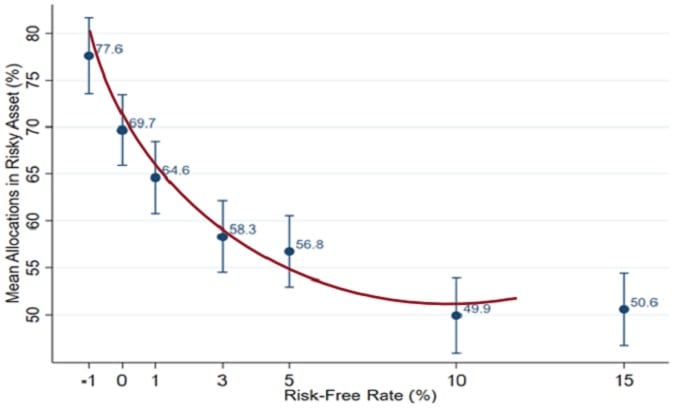Subscribe
Sign up for timely perspectives delivered to your inbox.

Nick Sheridan, European value portfolio manager, explains why he expects value investing to return to the fore.
The past few years have been a particularly challenging time for investment strategies focused on stocks that fall within the ‘value’ category, at least in terms of perception, given the extreme difference in returns relative to ‘growth’ stocks in the market. So, given the recent revival for value, is it time to revisit the argument?
Value investors look for stocks of companies that are trading at a price that does not match their intrinsic value, which can be measured in various ways, such as book value to price, forward price-earnings (P/E ratio) or dividend yield. But a low P/E ratio does not automatically mean that a stock represents a good investment opportunity, or that poor companies cannot also benefit from broader market factors. It is worth keeping in mind that distressed or overleveraged companies can be among the earliest beneficiaries in any value rally. After all, if you are concerned that a company might go bust, and suddenly that changes, that asset goes from having an expected value of zero to a value higher than zero. In percentage terms, that move can be quite significant, as we have seen.
But is there any prospect of a more fundamental shift from growth to value? The answer may lie in why growth has done so well.
The era of vast government spending, financed mostly through debt, has injected a vast amount of liquidity into the system. Near-zero interest rates have encouraged risk taking to the benefit of growth stocks, as shown in the chart below. The scale of stimulus measures in the pandemic has been prodigious, particularly in the US1, where government fiscal measures included the American Rescue Plan ($1.8 trillion), the Paycheck Protection Program and Health Care Enhancement Act ($483 billion), the Coronavirus Aid, Relief and Economy Security (CARES) Act ($2.3 trillion), etc, plus various monetary measures from the US Federal Reserve. At some point, this will need to unwind.
Low interest rates can benefit long duration assets (growth equities) as they encourage risk taking. This will need to unwind.

Many fresh-faced entrepreneurs have taken the opportunity offered by record low borrowing costs in recent years to start new businesses, using modern technology to compete with traditional businesses. This spans beyond just consumer goods to cover any embedded service/industry with high legacy costs, such as banks (replaced by apps), finance (apps), publishing (internet as a disruptor), hotels (apps/internet), or any industry that is a commodity but where the industry is fragmented, such as gyms, car rental services or even food basics.
If we roll the clock forward a couple of years, these entrepreneurs may be facing challenges – businesses with growing revenues but with debts, or that are loss making (whether due to start-up costs, unexpected expenditure or selling below cost). It may be the case that these businesses are sold or floated to generate additional investment/cash. As long as investors are happy, the company can continue to raise cash despite making losses or paying no tax, leading to lower returns for everyone in the sector… Does this sound familiar?
Some of these growth companies will overcome the existential challenges facing any new business and go on to great things, unfettered by the costly legacy trappings of past eras. But there are some businesses backed by private equity/investors where the probability of success is likely very low, or where expectations are significantly over-hyped and where their existence is increasing or disrupting supply; hence, lowering incumbents’ returns. The game seems to be ‘winner takes all’, which if cheap money and high investor exuberance continues, is a strategy that can succeed.
As long as everyone dances to the same tune, nothing changes. But if the music changes; investors should keep in mind that valuations are largely based on the following fundamentals:
1. Sales (revenues)If anything alters these factors, it will not only affect the intrinsic value of a business, but – more importantly – also the value ascribed by the investor to the business. While company fundamentals usually change on a slower cycle, the mood music for investors can turn in a single moment.
It is difficult to ignore the argument that global gross domestic product (GDP) is likely to rise strongly in the months ahead as economies reopen. This should, in general, be good for value stocks, as sales and profits tend to be more correlated with the direction of the economy (GDP) than for growth stocks. Value stocks often have higher fixed costs, so they are likely to benefit more than growth stocks, in terms of margin expansion, from any recovery in sales (see points 1 and 2 above).
The return of inflation, whether it turns out to be transient or not, is also a supportive factor for value. It allows companies to increase prices and brings demand forward – buy now, rather than later when prices have gone up – and should correlate with higher wage levels (another driver of demand). Finally, inflation and a change in monetary policy (higher interest rates) increases the discount rates for equities, which is better news for value stocks than growth.
Looking at points 3 and 4, the level of debt and the cost of this debt can be a double-edged sword; in that it can hurt value stocks (which tend to have higher leverage) in bad times but provide a tailwind when conditions are right. If we are entering a period of recovery, then it may prove favourable for value.
As for taxes, modern technology firms have faced pressure to pay more tax. We are seeing governments worldwide seeking to grab what some may view as a ‘fairer share’ of their profits, which would clearly impact the valuation of such companies.
Investor sentiment can be particularly challenging to assess, subject to both market and non-market factors, and with the added complications of fear and euphoria. What constitutes a decisive tipping point is often only identifiable with hindsight. So, what can we say?
We have argued that market fundamentals seem to favour value at present, but some factors require caveat. If global GDP growth leads to sustainable inflation and higher interest rates, value should prosper. If we see widespread wage inflation boosting demand, value should prosper. If, globally, trade barriers go up, increasing transaction costs for certain businesses, more domestically focused companies should benefit, which should favour value.
These are all ‘could, would, should’ statements. Ultimately, investors need to start looking at the underlying returns companies are making, rather than dreaming about tomorrow. If the post-pandemic era marks a return to normality, then investors will no longer need to pay up in the hope of holding companies with the potential to deliver attractive returns in future. Value as an asset class may have better times ahead.